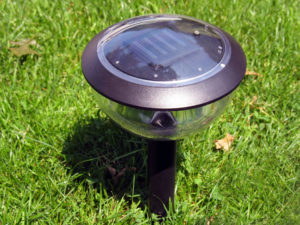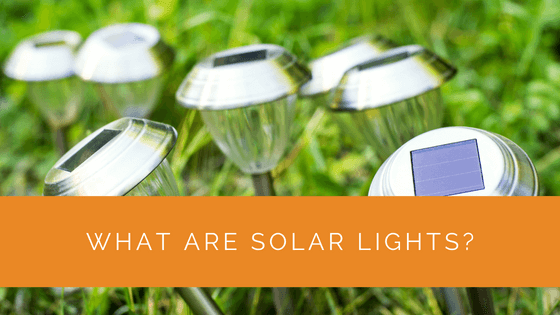Solar lights, a marvel of modern technology, are transforming how we illuminate our world using the sun’s power. These innovative devices harness solar energy to provide lighting, merging environmental sustainability with efficiency. But what exactly are solar lights, and how do they seamlessly integrate into our daily lives? This article deepens into solar lighting, unraveling its workings, benefits, and applications straightforwardly and engagingly.
Embark on a journey to understand solar lights beyond their glowing facade. We will explore their scientific composition, the process behind their luminous efficiency, and the diverse types available for various uses. Additionally, we delve into the practical aspects of solar lights, such as their longevity, cost-effectiveness, and minimal maintenance they require. This comprehensive guide is designed to enlighten you on all aspects of solar lights, ensuring you are well-informed about this bright, sustainable lighting option.
Contents
Key Takeaways
- Solar lights are sustainable fixtures that use the sun’s energy to generate electricity for indoor and outdoor lighting, offering an environmentally friendly and cost-effective way to illuminate homes and public spaces.
- These lights consist of solar photovoltaic panels, rechargeable batteries, control systems, and LED lights, all working together to convert sunlight into electrical energy.
- Solar lights come in various types, require little maintenance, and can provide illumination for 4 to 12 hours, depending on the battery’s performance and the sun’s intensity. The overall installation cost varies but can be cost-effective for long-term energy savings.
The Scientific Definition of A Solar Light
These are lights that brighten your home using solar energy. Simply put, solar refers to the sun, while light means to provide illumination. Hence, using the sun’s energy, these devices can produce warm white light.
It is a portable fixture with a photovoltaic panel and high-performing LED lamps.
These products also have a battery charging system that recharges automatically using renewable energy from the sun. In the United States, these lights have become an economical way to generate electricity for day-to-day requirements.
There are four main components found in the anatomy of solar light:
- The solar photovoltaic panel or PV system contains solar cells to trap the solar energy and convert it into electricity
- An automatic battery that stores the converted solar power for your home
- A control system that allows you to keep the light’s intensity in check
- Light fixtures made from stainless steel to help you decide where to install the product
- An LED light that captures the electric energy and emits light due to the fusion reaction
You will find various kinds of devices, mainly indoor and outdoor ones. Hence, you can install these solar-powered fixtures in public and private locations. For example, the government can use it for traffic or street lights, and you can install some solar garden lights.

How Does a Solar Light Work?
Irrespective of the type of light you get, the portion with the panels should be in your outdoor space. Doing so will help enhance the photovoltaic effect and produce strong electrical energy.
The first step in the illumination process begins at the brink of dawn when the solar panel gets sunlight. The panels absorb this sunlight using solar cells.
When the light strikes these cells, the electrons present in the crystalline silicon get ejected. As a result, there are vacancies produced through the escaped electrons. The electrons generate a negative layer, and the holes become a positive layer in the electric field.
According to ACS, this electric field charges up when the negatively charged and positively charged fields meet, exciting the electrons. In turn, it creates an electrical charge.
Besides, the flow of electrons allows it to cross the depletion zone, which helps create a surge of electricity in the cells. In short, the natural light converts into a unique direct electrical current. This current then flows through wires and the charge controller to reach the batteries for storage.

Benefits of Solar Lights
Solar lights come in various types. Some of them include indoor or outdoor solar lights. Moreover, you can also find a kind of solar street light in the United States owned by the government.
Similarly, there are solar string, spot, post, flood, fence, and more types on the market. Irrespective of the type, you will gain the following benefits:
- Environmentally friendly devices
- Unlimited energy and electricity
- Little to no maintenance is required
- Numerous varieties of available products
Along with these, the cost-effectiveness will also be in your favor. These products are a great way to produce electricity daily in the United States.

How Long Does a Solar Light Last, and How Much Will It Cost?
Most LEDs (solar lights) have an automatic turn-on feature. Due to this, the device automatically turns on the light at night using the current stored in the battery.
These light fixtures can illuminate your home for 6 to 8 hours. Some military-issued lights could also work for 12 hours on a single charge. Remember that the sun’s intensity and the location of the panels will influence the overall lighting situation.
Solar lights are very inexpensive when it comes to your electric bill. However, the overall costs will depend on your local area’s energy production, consumption, and electricity rate.
As a rule of thumb, a residential solar panel unit of 5kW will cost around $5 per watt. Hence, the overall cost of installation will be approximately $25,000. In some cases, the wattage costs $3, making it $15,000 for installation.
Solar lights do not require too many installation costs since they are ready-made. For example, the cheapest one could cost $20 to $40, while the average is $150. Some products could also be more than $1,000.
Various solar energy basics would help you determine the cost of using solar energy near your United States home. Indeed, optimizing your consumption and maximizing the installation would help balance the financial equation.
With this, your energy needs could cost you a few thousand dollars in a year with a 25-year lifecycle product.
Expert Insights From Our Solar Panel Installers About Solar Lights
Solar lights are a fantastic way to combine sustainability with functionality. By harnessing solar energy, we can provide efficient and eco-friendly lighting solutions for various applications.
Senior Solar Panel Installer
One of the greatest benefits of solar lights is their low maintenance. Once installed, they operate almost autonomously, making them a practical and cost-effective lighting solution.
Lead Solar Engineer
Installing solar lights not only reduces electricity bills but also contributes to a greener environment by utilizing renewable energy sources.
Chief Installation Officer
Our Expertise in Solar Lights
At Solar Panels Network USA, we’re here to provide you with valuable information and support regarding solar lighting. With our experience and understanding of the solar lighting industry, our team of experts is prepared to assist you in finding the right lighting solution for your needs. Whether you’re interested in improving your outdoor spaces, conserving energy, or adopting a more sustainable approach, we’re well-equipped to help. Please feel free to contact us with any questions or inquiries.
The Bottom Line
These LED lights feature a solar panel with multiple solar cells. Once the sunlight hits the panel, the negative and positive charges create electricity in the solar cells. This electric current is stored in the rechargeable battery after the solar energy conversion, which helps light the bulbs.
Moreover, you can get warm white light from any product you invest in.
It is not only environmentally friendly but also offers an easy-to-maintain essence. Depending on the high-performing battery, these light fixtures can illuminate your home for 4 to 12 hours. At the same time, it only costs you a few thousand dollars annually.
So, are you ready for a personal solar lighting fixture in or around your home?
About the Author
Solar Panels Network USA stands at the forefront of solar energy solutions, driven by a team of seasoned solar engineers and energy consultants. With over decades of experience in delivering high-quality solar installations and maintenance, we are committed to promoting sustainable energy through customer-centric, tailored solutions. Our articles reflect this commitment, crafted collaboratively by experts to provide accurate, up-to-date insights into solar technology, ensuring our readers are well-informed and empowered in their solar energy decisions.

